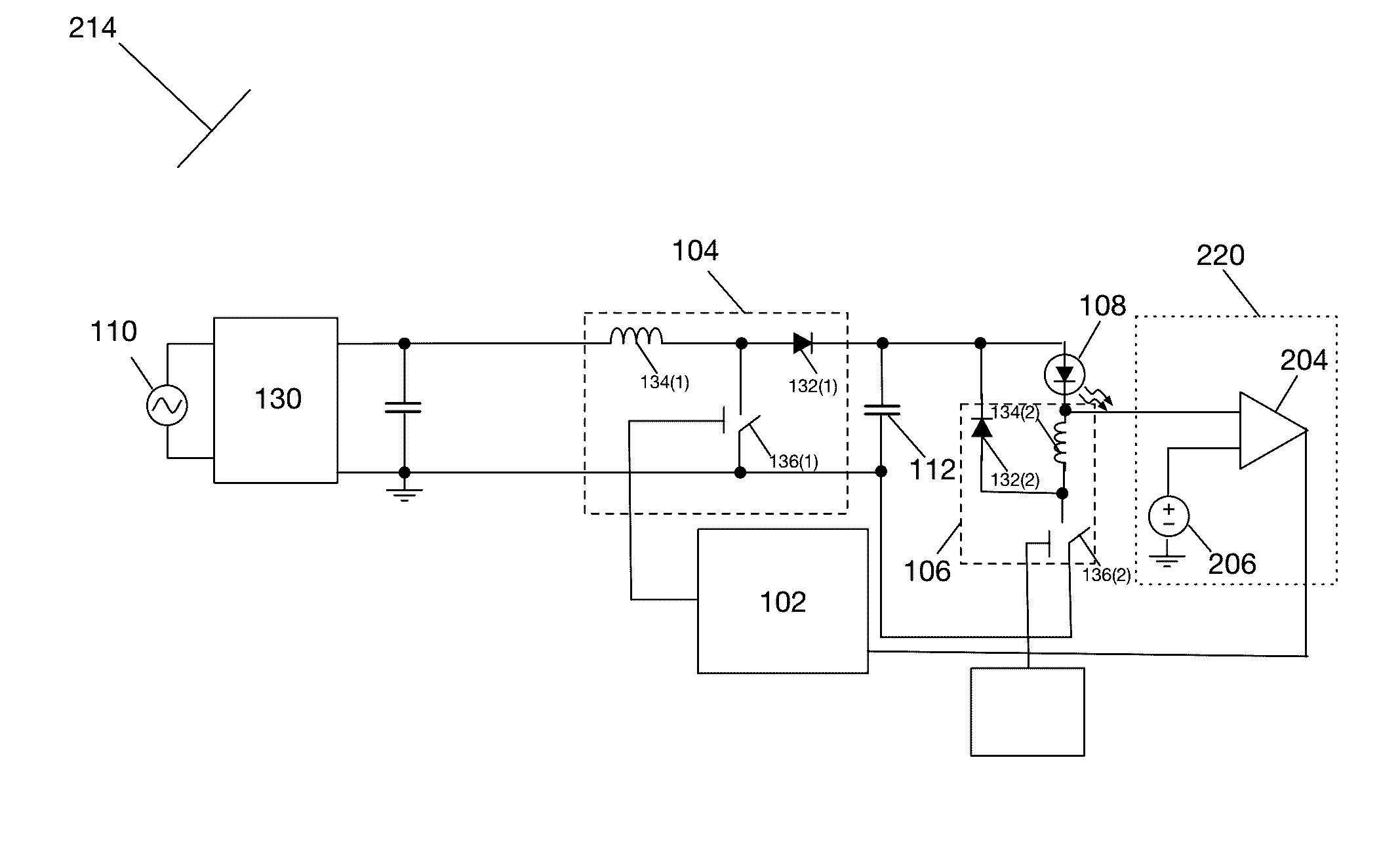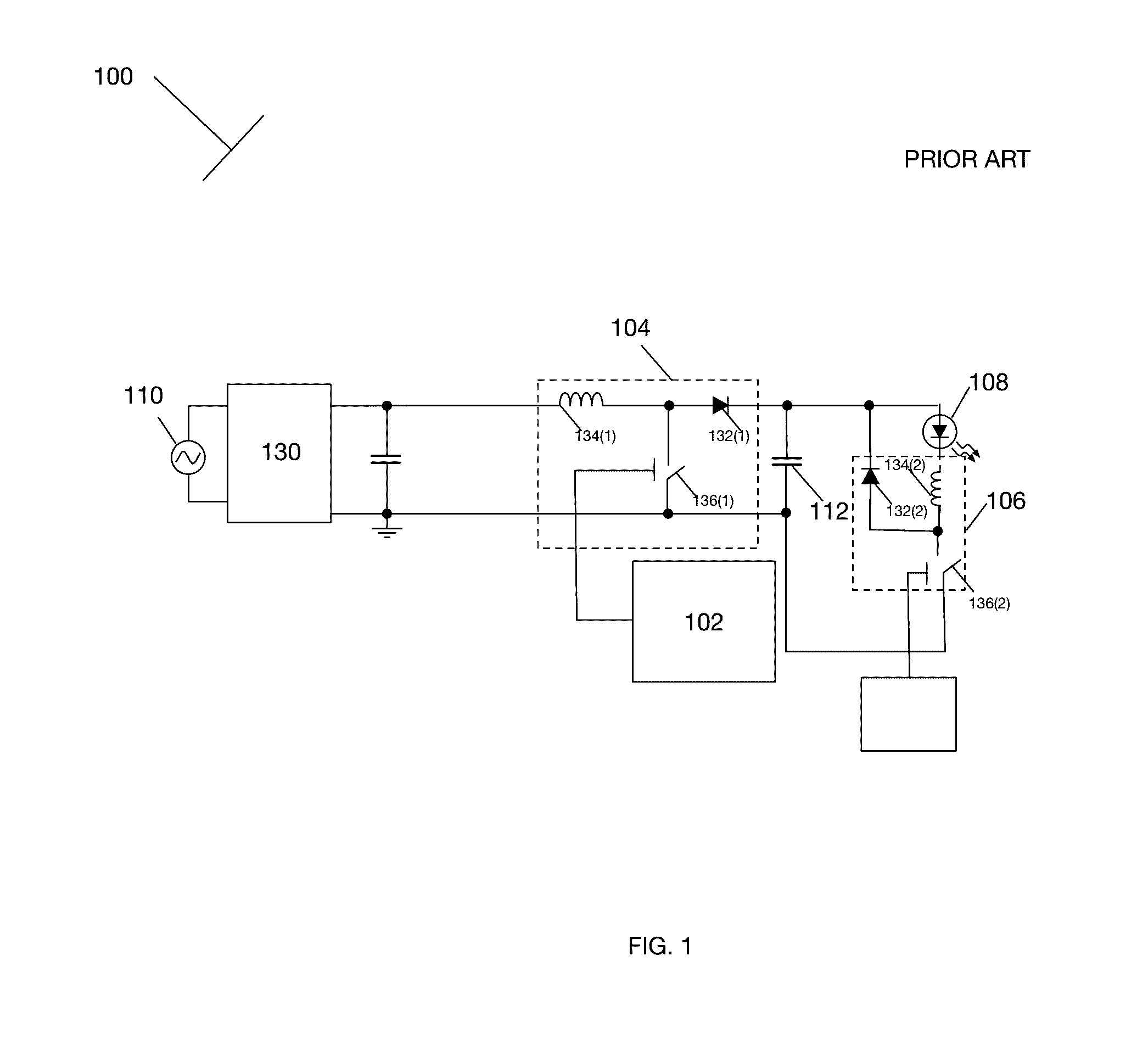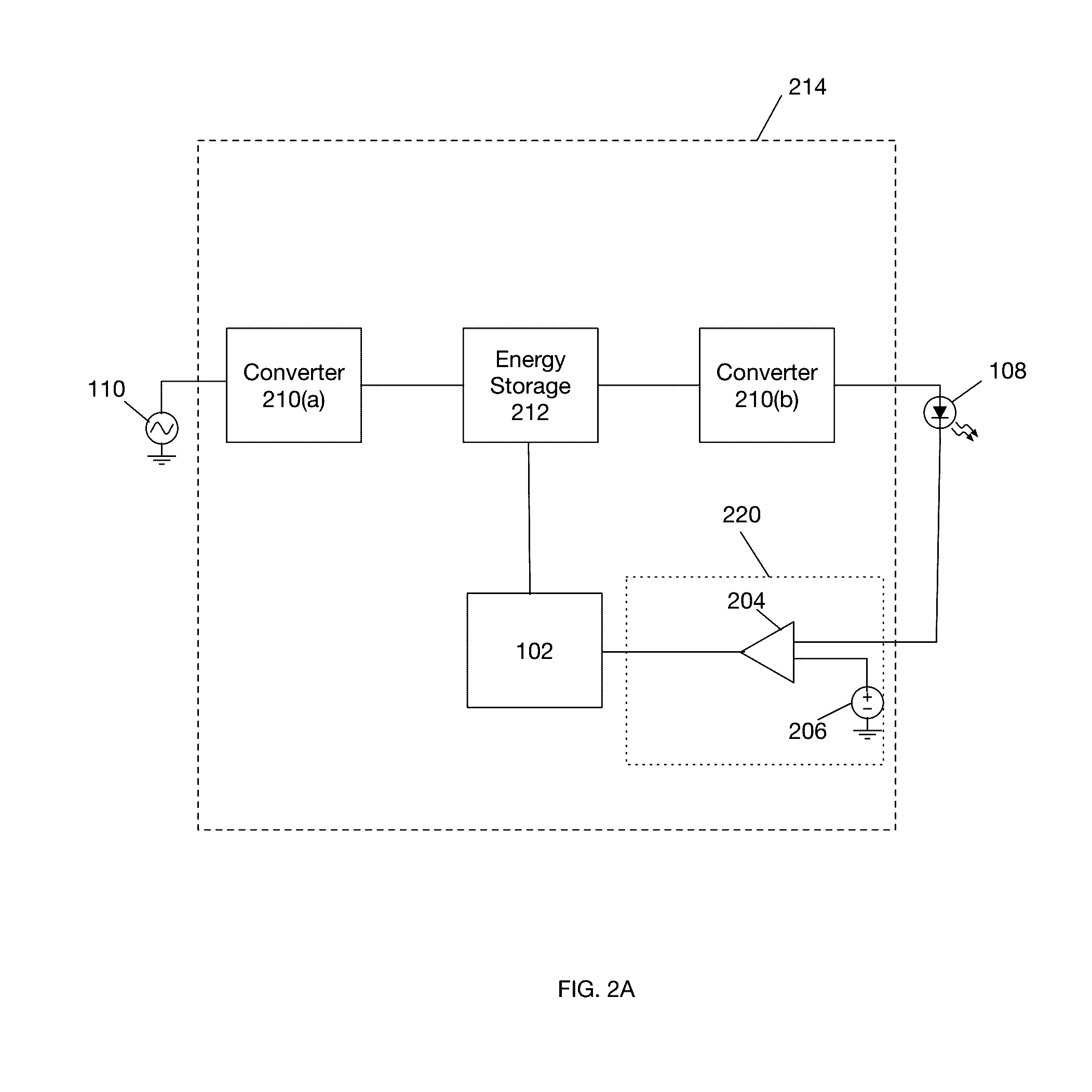Dynamic power supply for light emitting diode
a technology of light-emitting diodes and power supply systems, applied in the direction of lighting devices, electrical equipment, light sources, etc., can solve the problems of degrading the performance of sourced leds, and reducing the efficiency of each converter. , to achieve the effect of maximizing the efficiency of the light-emitting diodes
- Summary
- Abstract
- Description
- Claims
- Application Information
AI Technical Summary
Benefits of technology
Problems solved by technology
Method used
Image
Examples
Embodiment Construction
[0025]FIG. 2A is a block diagram of a dynamic power supply for powering an LED incorporating dynamic adjustment of an energy storage device according to one embodiment. As shown in FIG. 2A, dynamic power supply 214 comprises energy storage device 212, first voltage converter 210(a), second voltage converter 210(b), voltage control system 102 and detector 220. Energy storage device 212 may be a capacitor or other device for storing energy in electromagnetic or other form. First voltage converter 210(a) is electrically coupled to input voltage source 110 and energy storage device 212. Second voltage converter 210(b) is electrically coupled to energy storage device 212 and LED 108.
[0026]Converter 210(a) performs AC to DC conversion as well as voltage conversion of a received AC electromagnetic signal from power supply 110. In particular, converter 210(a) receives as input an alternating current (“AC”) electromagnetic signal from power supply 110 at a first voltage and generates as outp...
PUM
 Login to View More
Login to View More Abstract
Description
Claims
Application Information
 Login to View More
Login to View More - R&D
- Intellectual Property
- Life Sciences
- Materials
- Tech Scout
- Unparalleled Data Quality
- Higher Quality Content
- 60% Fewer Hallucinations
Browse by: Latest US Patents, China's latest patents, Technical Efficacy Thesaurus, Application Domain, Technology Topic, Popular Technical Reports.
© 2025 PatSnap. All rights reserved.Legal|Privacy policy|Modern Slavery Act Transparency Statement|Sitemap|About US| Contact US: help@patsnap.com



